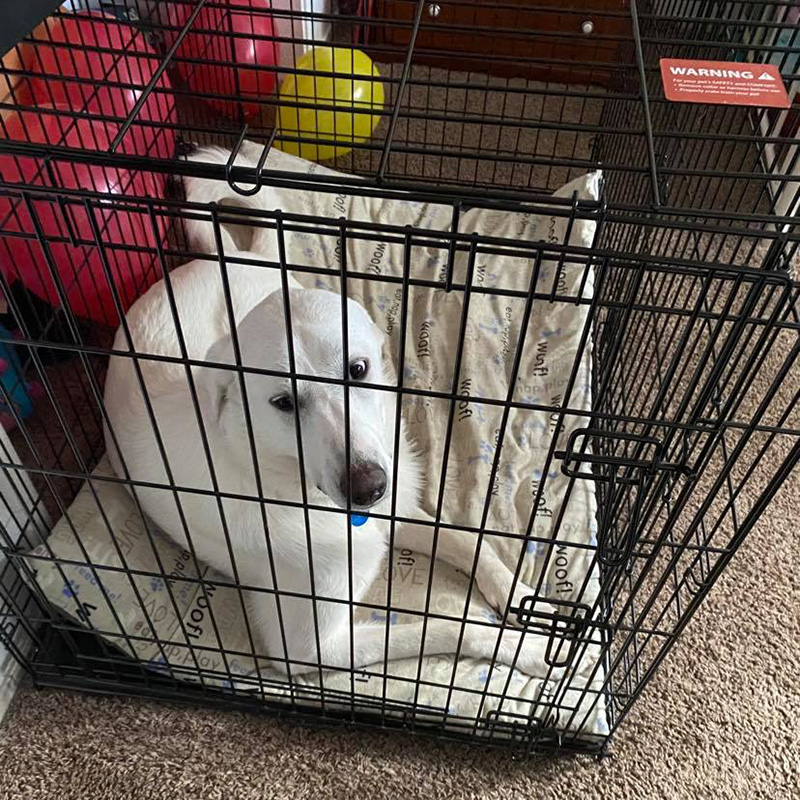
January is National Train Your Dog Month, so we’d like to give you some tips to help with crate training. Done in a positive way, crate training can be an effective component of house-training because dogs don’t like to soil their den. A crate can also be a safe place for your dog to have “downtime” and can also limit access to the entire house while you are unable to supervise and until your dog knows the house rules. A crate should never be used as a form of punishment and a dog should never be left in a crate for an extended period of time.
You can prevent problems with crate training by setting your dog up for success. He should only associate good things with the crate, so start by putting treats and/or toys in the crate and encouraging him to go in. Some dogs warm up to the crate slowly. If he is afraid to go in, place a treat in the crate as far as he is willing to go. After he takes the treat, place another treat a little farther back in the crate. At this point, remember to leave the door to the crate wide open. Continue this until your dog is eating treats at the very back of the crate. The next step is to feed your dog his meals in the crate with the door open so that he can walk in and out at will.
Soon, you can begin closing the door of the crate after your dog enters and leaving the door closed for short periods of time. When you are home the door of the crate should always be left open so your dog has a safe and quiet place. Depending on whether or not your dog is a chewer, it’s nice to have a comfortable bed or towel in the crate. Covering part of the crate with a blanket or sheet can also help your dog feel more secure and settle down but you need to be aware that puppies and some older dogs may enjoy chewing on the blanket or attempting to pull it into the crate.
Crate training your dog can take days, so be patient and encouraging. As your dog begins to feel comfortable, you can gradually increase the amount of time your dog is in the crate. Puppies under 6 months should never stay in a crate for more than 3 hours because they can’t control their bladders or bowels for that long. If a crate is properly introduced and used, your dog will happily enter, settle down, and will even enjoy the safety and security of the crate.



